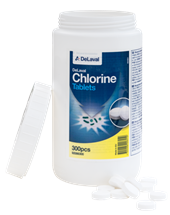Tip of the month – August 2016
Disinfect camera body.
Our preparation cup washes and stimulates perfectly, but sometimes it happens that afterwards a (front)teat is touched by the camera body.
“Every advantage has its disadvantage”, said Johan Cruijff, but we want to keep the disadvantage to a minimum.
Therefore, it is very wise to not only wash the glass a few times a day, but also the camera body.
It is wisest to clean with a chlorine solution.

Hydrogen peroxide (PeraDis) was also advised, but if it is not thoroughly rinsed, it may lead to corrosion.
With a bucket of chlorine solution, made according to the instructions, and a brush on long steel or carwash brush, clean the camera house frequently in order to prevent bacteria transfer during milking.
The rubber flap, preparation cup and other parts can also be cleaned in this fashion.